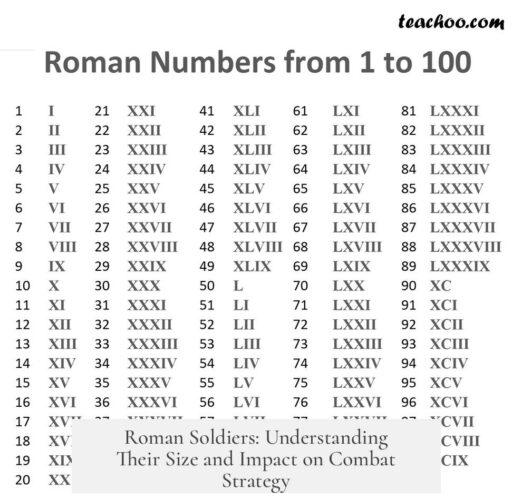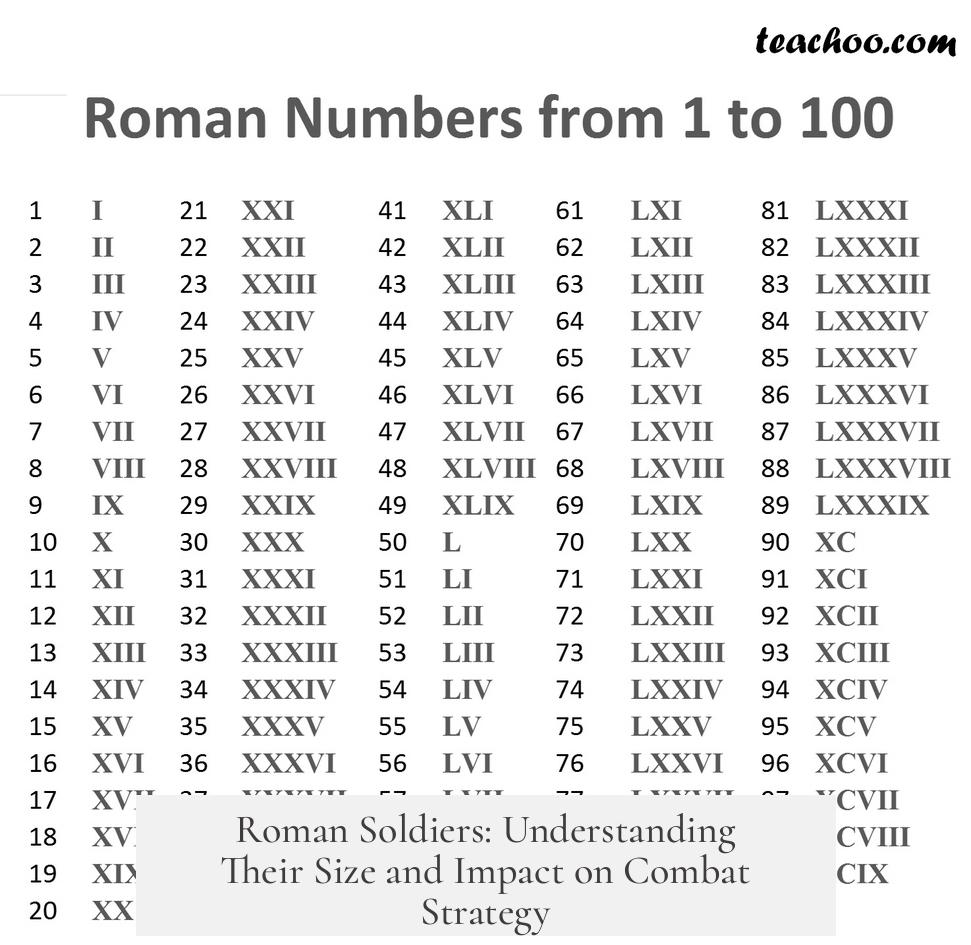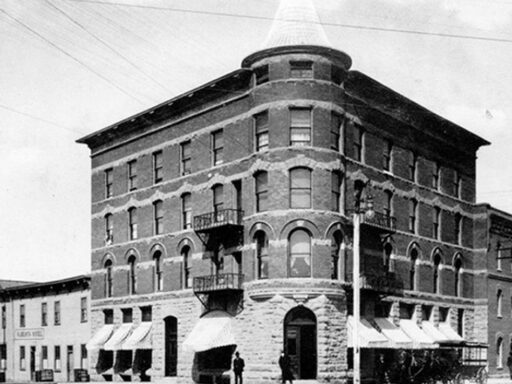The physical size of a Roman soldier averaged about 5 feet 6 inches tall, or 168 centimeters, based on archaeological studies and ancient texts. Despite being shorter than many of the barbarians they faced, Roman soldiers compensated for their stature with disciplined formations and tactical equipment. Exceptional individuals reached heights of 6 feet or more, though such cases were rare due to nutritional and environmental factors.
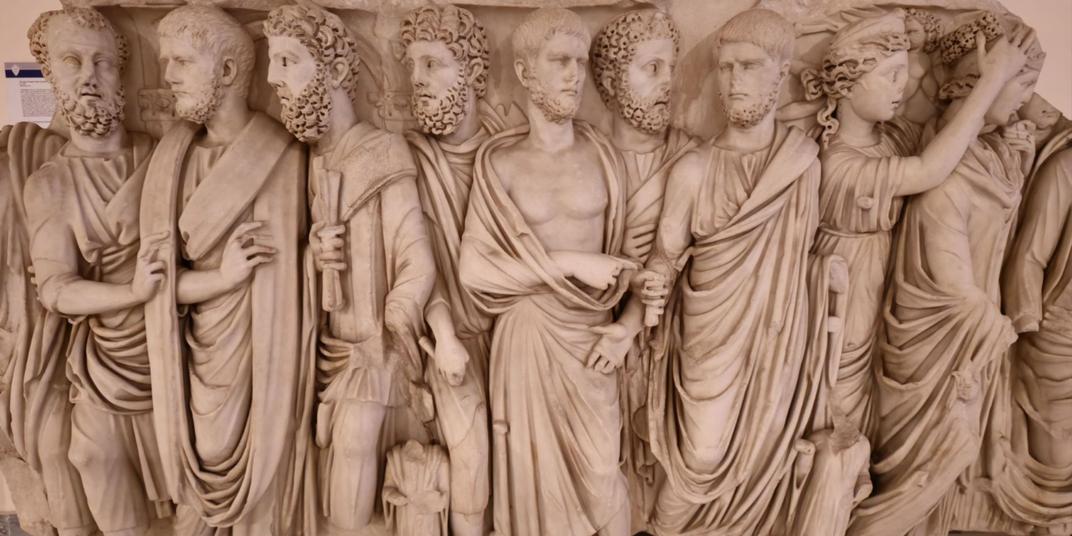
Geoffrey Kron, an expert in ancient Greek history, analyzed skeletal remains from Italy dating between 500 BC and 500 AD. His study found the average male height to be 168 cm (5’6″). This measurement offers a realistic baseline for the Roman legionaries, who mostly came from the Italian peninsula. Ancient Roman literature supports these findings. Vegetius, writing in De Re Militari, states the ideal soldier height around 5’11” in Roman feet. Since a Roman foot measured roughly 11 inches, the actual height corresponds closer to 5’4″ to 5’5″. This shows consistency between archaeological and historical data.
Roman soldiers were smaller compared to the barbarian groups they fought, like the Celts and Germanic tribes. Historical accounts describe these groups as taller and more muscular. For instance, archaeological evidence suggests Celts were a couple of inches taller on average but not drastically so—certainly not six or seven inches taller. Barbarians often reached heights up to about 6’2″ or 6’3″, helped by protein-rich diets that included more meat than the Roman grain-based diet allowed. These dietary differences played a major role in physical size variation.
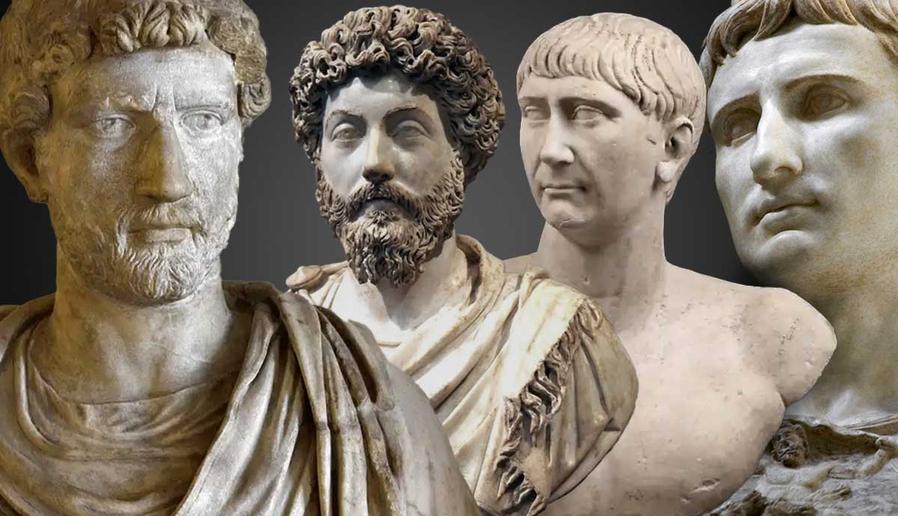
Despite their smaller frame, legionaries relied heavily on tight battle formations such as the testudo and manipular lines. These formations reduced the disadvantage size posed. The standard Roman scutum shield also helped protect against the sweeping attacks of taller adversaries. By working together in close ranks, soldiers compensated for individual height differences, making Roman armies effective against physically larger enemies.
- Roman soldier average height: approximately 5’6″ (168 cm)
- Ideal height per Vegetius: approx. 5’4″ to 5’5″
- Celts and barbarians: generally 2-3 inches taller; may reach 6’2″ to 6’3″
- Diet impact: Romans ate mostly grains; barbarians had more protein
- Military formations compensated for smaller size
Exceptional cases of taller Roman soldiers existed. For example, Emperor Nero formed a legion in 66 A.D. with a height minimum of 6 feet. This unit was unique for its Hellenistic phalanx style of combat. Such requirements show the Romans could recruit and field very tall men. However, taller soldiers remained the minority due to limitations like diet and genetics. The average height reflects broader population trends rather than rare outliers.
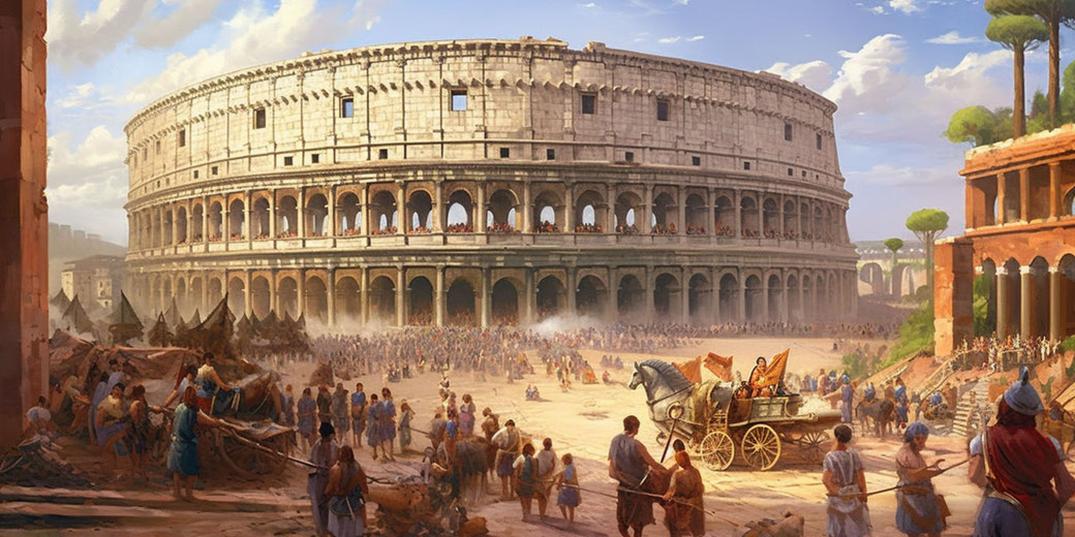
The impact of height on combat between Roman soldiers and barbarian warriors also differs according to combat style. Barbarians excelled in one-on-one fighting, often overpowering Roman legionaries individually. The Romans prioritized group tactics and unit cohesion. Their success against numerically and physically superior enemies stemmed from these formations and discipline rather than raw size or strength.
What about physical fitness? Though their size was smaller, Roman soldiers were highly fit. Constant physical training and rigorous campaigns demanded strength and stamina. The Roman diet might not have maximized growth in height after adolescence, but it supported muscular build and endurance. Moreover, soldiers could gain muscle mass and robustness from training, even if they remained shorter than barbarian counterparts.
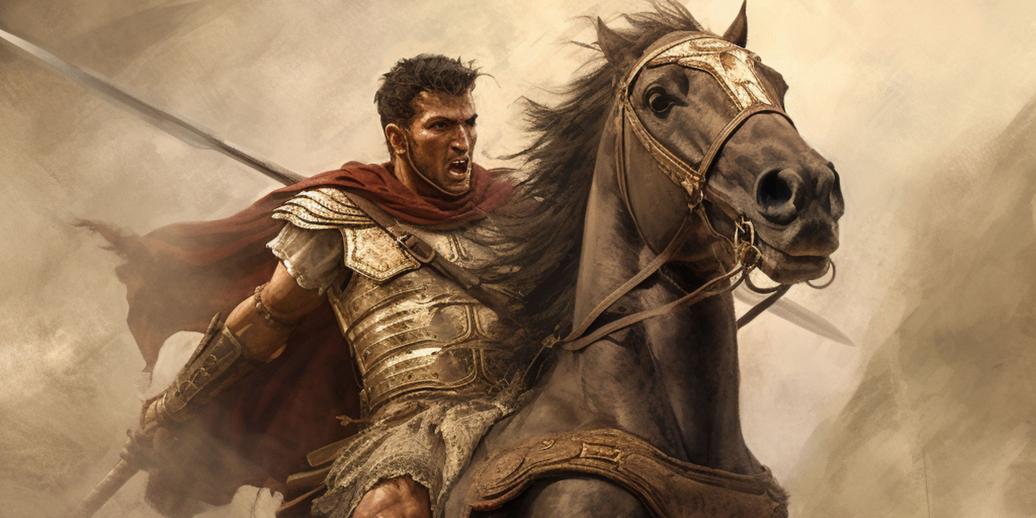
| Aspect | Roman Soldier | Barbarian Opponents |
|---|---|---|
| Average Height | 168 cm (5’6″) | Approx. 173–180 cm (5’8″–5’11”) |
| Diet | Grain-based with little meat | Higher protein, more meat |
| Combat Style | Formations and group tactics | Single combat emphasis |
| Physical Conditioning | High fitness, muscular build | Likely strong, muscled |
Roman soldiers’ physical size reflects ancient population norms and resource availability. Their success on the battlefield owed more to tactical innovation, discipline, and teamwork than to individual attributes like height. Exceptional tall soldiers existed but were not the standard.
- Average Roman soldier height: 5’6″ (168 cm).
- Barbarians generally taller by 2-3 inches on average.
- Roman diet limited overall height growth.
- Size differences offset by formations and equipment.
- Physical fitness of legionaries was excellent due to training.
Roman Soldier’s Physical Size: What Did They Really Look Like?

The average Roman soldier was about 5’6″ tall, considerably smaller than modern men and slightly shorter than many of the barbarians they fought against. That’s a solid starting point, but what does that mean in terms of battle, daily life, and why were they this size? Let’s dig deeper and separate myth from reality.
How Tall Were Roman Soldiers, Really?
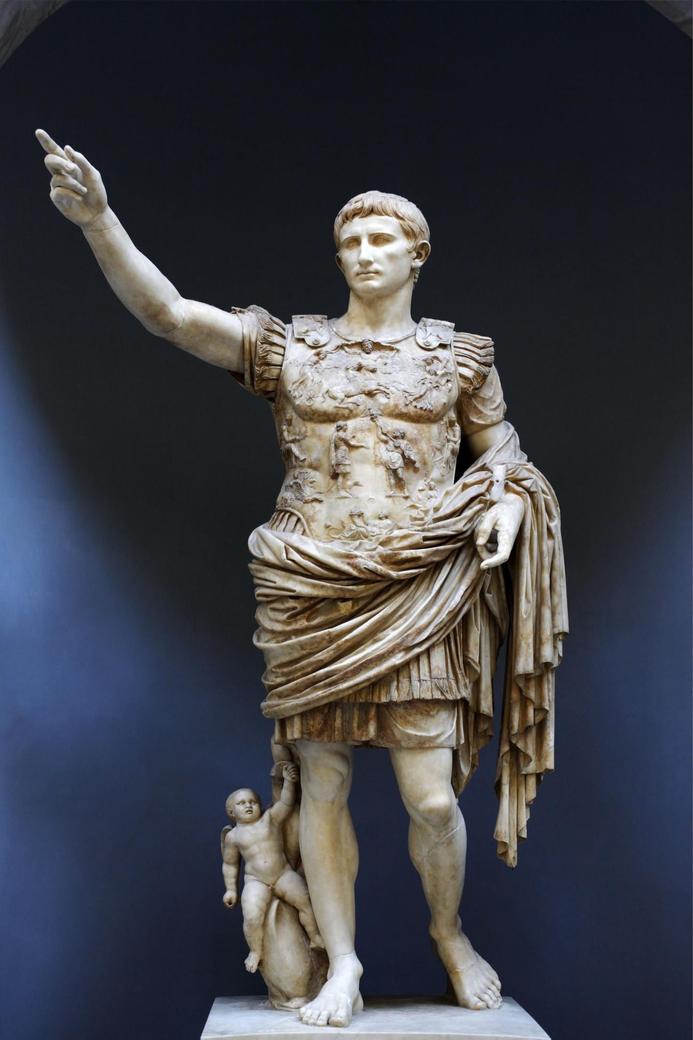
Based on a fascinating study by Geoffrey Kron, a historian at the University of Victoria, the average male buried in Italy between 500 BC and 500 AD stood at about 168 cm (5’6″). That gives us a rough idea of the general population’s height, and, by extension, that of Roman soldiers.
Vegetius, the ancient military writer who penned De Re Militari, had his own take. He suggested that the ideal height for a legionary was 5’11” in Roman feet. But here’s the catch: a Roman foot equals roughly 11 inches, not 12. So the ideal height translates closer to 5’4″ or 5’5″. Surprisingly, this is even shorter than the archaeological evidence Kron uncovered.
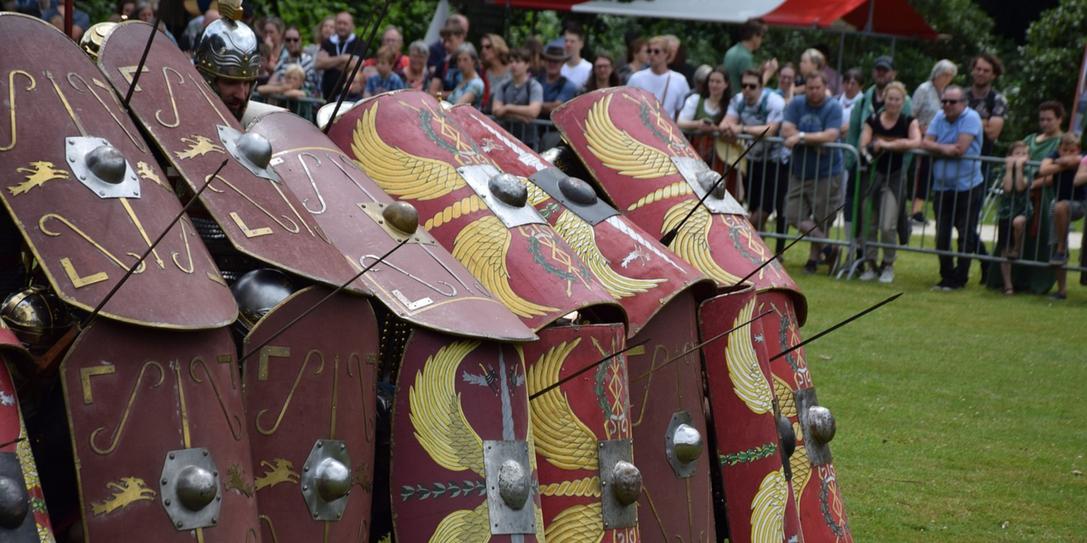
So we have two figures: a general population average of about 5’6″ from skeletal remains and an ideal height of 5’4″ to 5’5″ from military guidelines. It’s safe to say that average Roman soldiers likely hovered around 5’5″ to 5’6″.
Roman Soldiers Were Smaller Than Their Enemies, But Not Without a Plan
The Romans often faced taller foes. Celtic tribes, for instance, were reputedly a bit taller and buffed. Historical accounts and some archaeological finds indicate Celts were maybe a few inches taller—but not by a huge margin. Certainly, these Celts weren’t mythical giants standing 6 to 7 inches taller than Romans.
Barbarians, particularly in northern Europe, sometimes reached heights of 6’2″ or 6’3″ due to their meat-rich, protein-heavy diets—something Roman soldiers didn’t enjoy. The Roman diet was largely grain-based, supplemented with small amounts of meat, which affected their average stature.
If you imagine a Celt looking down at Roman soldiers, it wasn’t rare to hear descriptions like “tiny brown men” wielding mattocks and spades instead of heavy swords and axes. These were not comments on bravery, just on size and armament.
Could Roman Soldiers Be Tall? Absolutely.
Though average heights were modest, remarkable exceptions existed. Emperor Nero famously raised a legion in 66 A.D. whose members had to be at least 6 feet tall. This legion was unique in adopting a Hellenistic phalanx style, setting it apart from the usual Roman legion formation.
If Italians, the empire’s cultural heart, could produce men six feet or taller, then distant provinces likely did too. The rarity of such tall soldiers was mostly due to nutrition and lifestyle, not genetic incapability. So, if you picture the Roman army, think of a mostly average-sized group with occasional tall stragglers who stood out.
The Role of Physical Size in Roman Combat Strategy
You might think a shorter soldier is a weaker soldier. In one-on-one combat, that might be true. Germanic and Gallic warriors favored single combat and could out-duel Roman legionaries. But the Romans weren’t in the business of dueling monsters.
Roman soldiers excelled in tight formations. The legions fought as units, shoulder to shoulder, shields overlapping in a near-impenetrable wall. Their primary defense tool, the scutum, was a large, curved shield that could block sweeping strikes from larger but less disciplined barbarians.
This tactical approach downplayed the importance of size. Even though individual Roman soldiers were often smaller and lighter than their foes, their formation multiplied their fighting ability. It explains how the Romans repeatedly triumphed over larger, taller barbarian armies.
Fitness and Build: More Than Just Height
Nutrition affected height, but physical fitness shaped the Roman soldier’s appearance and power. Enlisting didn’t miraculously add inches to a recruit’s stature—once you hit your late teens, height is mostly set. But it did build muscle, endurance, and toughness.
Life in the legions was rigorous. Marches of 20 miles or more in full gear were common. Daily drills and combat practice kept soldiers lean and strong. These men might have been short by modern standards, but they were hardy and resilient.
Why Should This Matter to Us Today?
Understanding the Roman soldier’s physical size breaks a few stereotypes. You don’t have to be towering to be a formidable opponent. Discipline, strategy, and stamina count more than raw size.
Think about how this applies in modern teamwork or sports. Sometimes it’s the well-organized, well-prepared group that wins, not the tallest or strongest member.
For history buffs, it’s a reminder that ancient populations looked very different from us—and shows the importance of context when reading about ancient warfare.
Final Thoughts
The Roman soldier’s height averaged around 5’6″, smaller than many foes but compensated through skill, tactics, and collective strength. Taller exceptions existed, but the army relied on discipline and formations over individual size advantages.
If you close your eyes, do you picture giant armored warriors or packed ranks of disciplined, average-sized men wielding their shields like perfect puzzle pieces? History sides with the latter.
So next time you imagine a Roman legion, remember: size matters less than teamwork—and a legion’s strength lies not in single soldiers but in the power of many.
